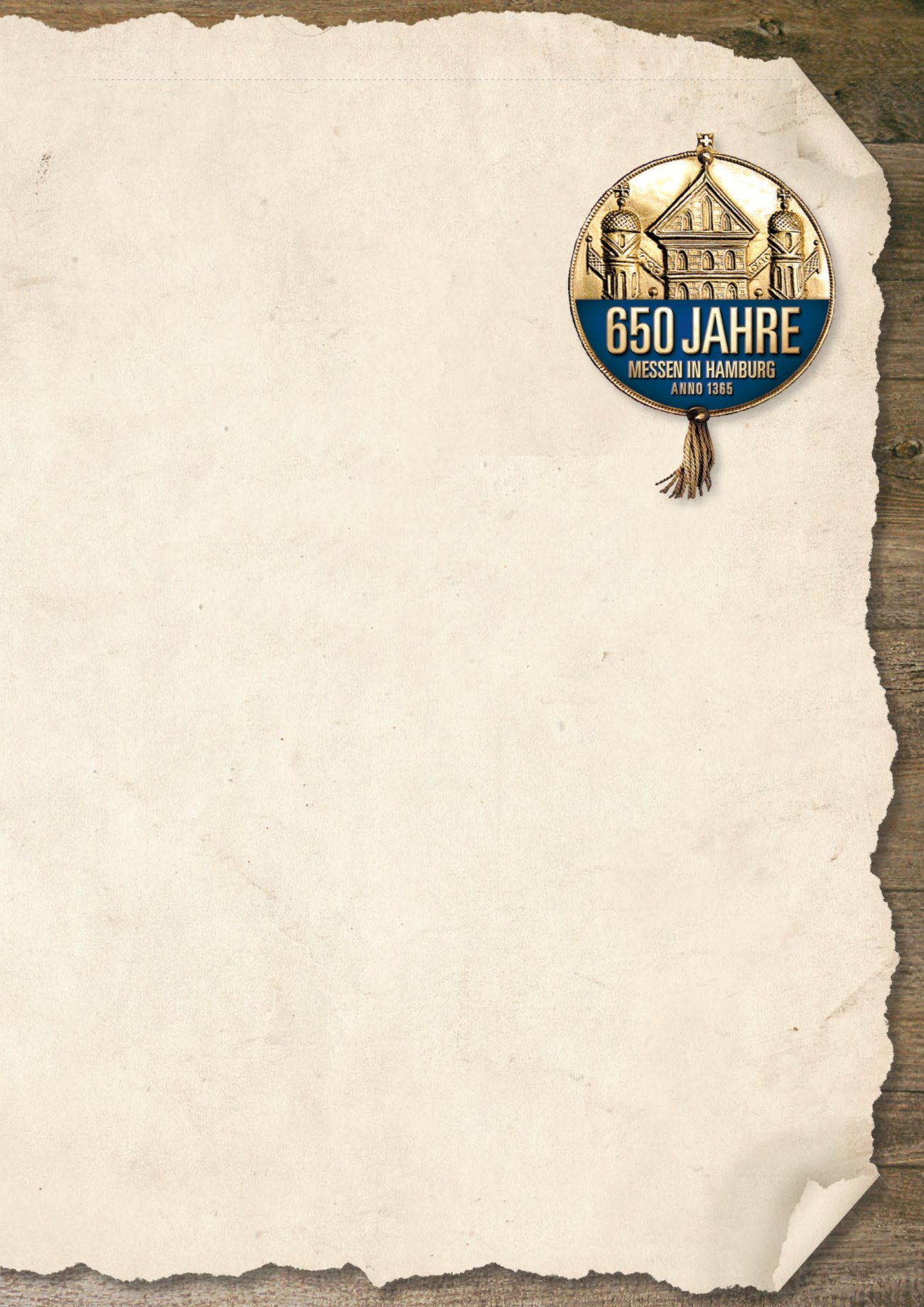

EMPEROR CHARLES IV
gave
permission for the exhibition in-
dustry to begin in Hamburg. On 29
January 1365, he granted the city the
right to hold fairs. This makes the city
on the Elbe one of Germany’s oldest
trade fair cities. Hamburg played an
important role in the ruler’s plans.
The city was to be one of the exte-
rior points of a powerful economic
cross, with Prague as its centre. The
new trade fair was held from two
weeks before until eight days after
Whitsun – hence the name “Whitsun
Fair”. The caravans of traders with
goods from the Orient and the
Mediterranean that assembled in
Prague were thus under special
protection. Goods were also trans-
ported to Prague from the other di-
rection – salt from Lüneburg, dried
cod from Norway and beer from
Hamburg – without the merchants
having to offer them in other cities
with special “staple rights”. Upon
the death of the monarch in 1378,
the trade routes changed and Ham-
burg’s right to hold trade fairs de-
clined in importance. In 1383, the
city council announced the end of
the Whitsun Fair.
THE KEY PLAYERS
in modern
trade fairs were Ernst Freiherr von
Merck, whose relief portrait still
hangs on a wall in Hall B4, and
Albert Lubisch. In around 1863, Frei-
herr von Merck managed to per-
suade 800 shareholders to build
the Hamburg Zoological Garden on
the grounds of today’s Planten un
Blomen park. However, the opening
in 1907 of Hagenbeck Zoo in Stel-
lingen put the zoo under financial
pressure, with the result that an in-
creasing number of exhibitions and
trade fairs began to be staged in the
zoo’s pavilion. In 1921, the young
Berlin-based editor Albert Lubisch or-
ganised the first Northwest German
Spring Fair for the hotel, restaurant,
café and catering trades, which
has evolved into today’s INTER-
NORGA – HMC’s oldest trade fair.
Albert Lubisch was appointed direc-
tor of the Zoo-Ausstellungs-Hallen
AG in 1923, thereby becoming Ham-
burg’s first trade fair manager.
TODAY’S HAMBURG MESSE
UND CONGRESS GMBH
was
founded in November 1972. Since
that time, the company, as the host
and co-organiser of events both in
Hamburg and abroad, has been an
ambassador, a job creator and an
important contributor to the city
of Hamburg’s economy. Even in
the Internet age, major organised
events, conventions and trade fairs
have great pulling power. After all,
there is no substitute for personal
contact. The trade fairs and con-
ventions held in Hamburg reflect all
of the economic clusters that the
Hanseatic city considers worthy of
support. There is a close interaction
between the region’s economy and
HMC, whose visitors and exhibitors
spend up to EUR 760 million every
year in Hamburg’s shops, hotels,
restaurants, sports facilities and cul-
tural institutions.
To let the public know about the
exciting history of trade fairs in the
Hanseatic city, HMC organised a
number of events during the anni-
versary year. These began with a se-
ries of public lectures at Universität
Hamburg sponsored by HMC in
collaboration with the university’s
Center for the History of Hamburg.
The seven lectures, which kicked
off on 8 October 2014, were given
by historians and exhibition ex-
perts from all over Germany, includ-
ing the heads of exhibition firms in
Frankfurt and Leipzig. They pro-
vided some surprising insights into
the development and relevance of
the exhibition industry. One of the
speakers was Bernd Aufderheide.
In his presentation, the HMC CEO ex-
plained the importance of the Ham-
burg fair as a success factor for the
city, its businesses and its people.
✱ ✱ ✱
The larger-than-life anniversary
seal decorated the facade of the
exhibition halls and was used
as the emblem for the many
publications, reports and events
during the anniversary year.
41
Hamburg Messe und Congress | Annual Report 2014
ANNIVERSARY










